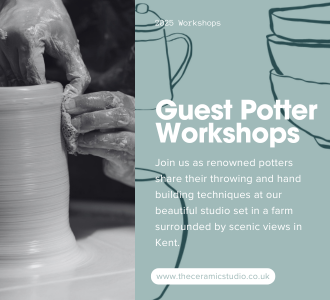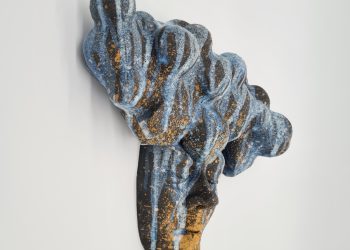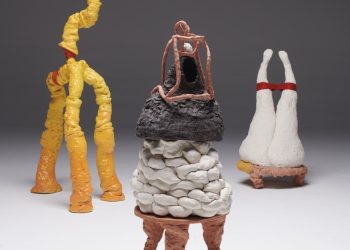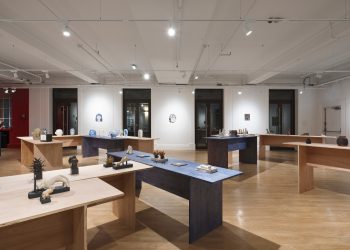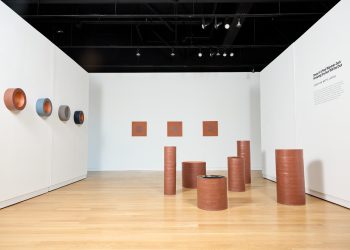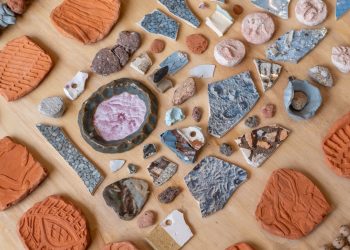Beatrijs van Rheeden is a Dutch ceramic artist known for her innovative work with porcelain. Born in 1965, she has developed a unique artistic voice that blends minimalism, abstraction, and a fascination with repetitive patterns and structures. She began her formal education in ceramics at the Art Academy Minerva in Groningen, the Netherlands, and continued her studies at the Academy of Applied Arts in Budapest, Hungary, where she earned a master’s degree in 1991.
Her artistic process is highly intuitive, with her porcelain works often reflecting the purity of form and rhythm. Recently, she has explored combining porcelain with crochet. Beatrijs’ pieces are known for their abstract nature, where the forms do not reference anything beyond themselves, embodying a minimalist ethos rooted in twentieth-century Dutch traditions.
Beatrijs has received several prestigious awards, including the European Ceramics Prize in 2009 and the Neue Keramik Prize in 2017. She has exhibited extensively, with notable exhibitions at the Icheon Ceramics Museum in Korea, the Fibre Art Textile Biennale in Australia, and multiple shows across Europe. Her work is part of several international collections.
In addition to her artistic practice, Beatrijs is an educator, regularly teaching ceramics and conducting workshops. She is also a member of the International Academy of Ceramics.
Visit Beatrijs van Rheeden’s website and Instagram page.
Featured work
Selected works, 2020-2024
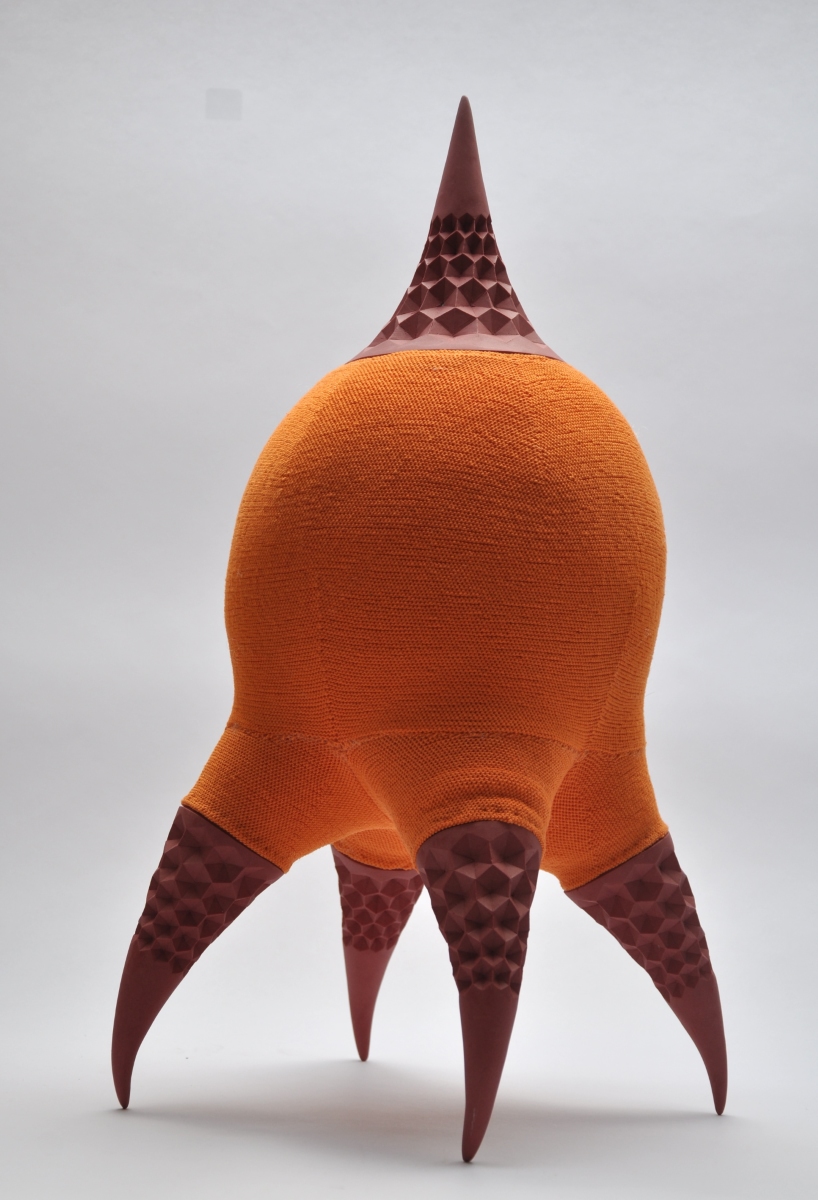
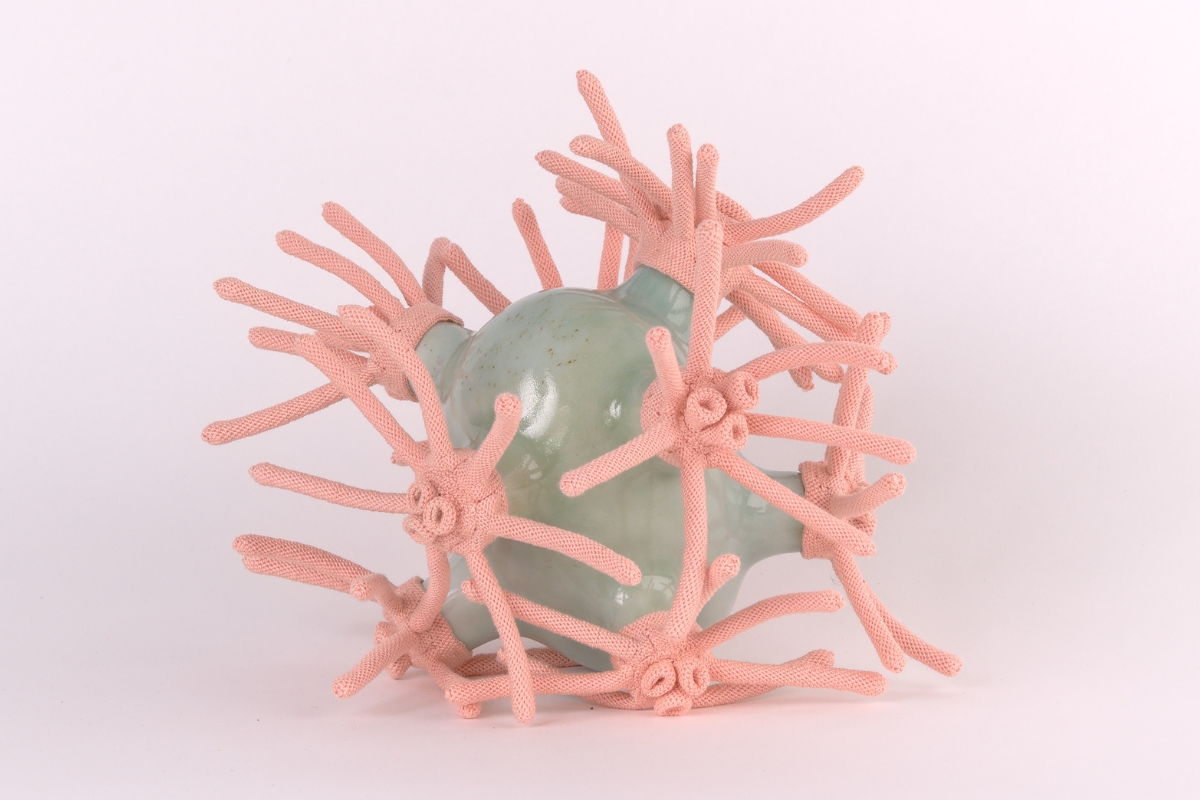
In the last 30 years, ever since I finished my Master’s Degree in Ceramics in Hungary, I have been involved in ceramics, and the previous 24 years have mainly involved porcelain as this is the material that engages me the most. My studies in Hungary at the Academy of Applied Arts in Budapest, but living at the International Ceramics Studio in Kecskemet, opened me to a much wider world of ceramics, as artists from all over the world came for residencies to the studio. It was in Kecskemet that porcelain came into view, as many artists came to Kecskemet expressly because of the wonderful porcelain they could work with there. Living at the studio while doing my studies gave me the opportunity to meet many artists and see how they worked.
Back home, I started my career as a ceramist in Rotterdam. From 2000 on, mostly with porcelain, a recurring theme in my work is structures, rhythms, grids, and repeating elements. Apart from the structure, form is very important, and for me, form must be clearcut, with flowing lines.
Growing up in a family of artists; my father was a painter turned art historian, and my aunt was a ceramist. We knew many artists, and making things was a natural state of being. Growing up in the ’70s and ’80s, modern art was my first love. Minimal art like Jan van Schoonhoven or Carl Andre made an impression on me. At the same time, at the homes of friends, I saw many forms of art, including some textile art that was very good and sculptural. In 2015, I saw an exhibition of work by Felieke van der Leest at the Coda Apeldoorn. She makes jewelry combining several materials, plastic ready-made toys, silver and gold, and the finest crochetwork. All these impressions and ideas culminated in the idea for me to try and combine my porcelain with textiles.
I was taught how to knit and crochet in primary school and have happily used it as a hobby ever since. I soon preferred knitting as it is a much faster way to make clothing, but I have crocheted some larger dolls for my children. It was only now that I considered using those skills for my work. My ceramics aunt once returned from a retreat in Taiwan and showed me her fine crochet work, which used embroidery thread.
I was inclined to use the finer thread as I started with small tryouts. Porcelain still being the starting point, I first made some smaller porcelain object with carving to see how I could combine this with textiles. Because of the holes that the carving causes, my first thought was to stick something fingerlike through the holes. This reminded me of my very first ceramic experience when I was 17, taking a course with a local potter. I crafted a handlike sculpture with the index finger pointing skyward. Looking back, this is a significant piece because, as a person, I am modest, but as an artist, I do want to stand out and be noticed.
So, my first experiment involved little fingers sticking through the raster-like porcelain. Crochet is a logical choice because it is easier to shape your forms with crochet. Making the crochet work fine and firm was another necessity in my eyes because I want my forms to be very defined and not too obviously needlework. Once I am in a flow of work, ideas will come one after another, following the things I am making, constantly evolving.
Naturally, the beehive structure that I am so familiar with in carving porcelain comes in handy when I want to make three-dimensional structures, whether this is porcelain or crochet.
Form and Structure are the main formal themes in my work. My imagination revolves around abstract form, and as my preferred technique is hand building, this form can be anything. Being formed by the 20th-century modern art world, this form must be clear-cut, relatively simple, and strong in form. As any artist, I take in the world around me and shape it into something that makes sense to me. My emotional inner world is the one that desires structure and order into my work.



